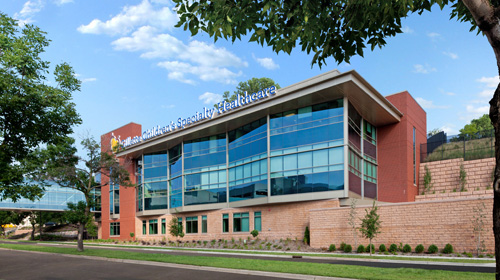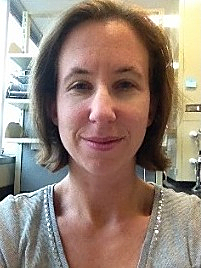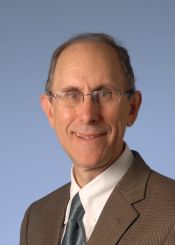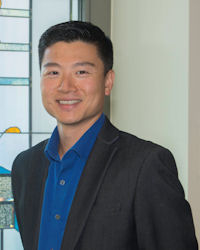Cure SMA Announces $270,000 New Grant Funding for Spinal Muscular Atrophy Researchers
Written by |

Cure SMA, an organization dedicated to the treatment and cure of Spinal Muscular Atrophy (SMA) — a severe and devastating neuromuscular disease that is one of the most common fatal genetic disorders, occurring in 1 in every 6,000 to 10,000 live births and the number-one genetic cause of infant death — has announced $270,000 in new research grant funding for scientists working on SMA studies.
SMA presents with variable degrees of severity as progressive muscle weakness that results in respiratory and mobility impairment. The four SMA categories are named for the age of the victim at initial onset of muscle weakness and related symptoms: Type I (Infantile), Type II (Intermediate), Type III (Juvenile) and Type IV (Adult onset).
Life expectancy and severity vary by SMA type. Type I has the grimmest prognosis with a life expectancy raging no greater than 2 years from birth, while Type IV sufferers can have up to normal lifespans but with increasing weakness of proximal muscles of the extremities that will eventually result in mobility inhibitions. Currently, treatment options for SMA patients are limited, and there is a high unmet need for new therapeutic options, both to address symptoms directly and to slow disease progression.
Cure SMA funds and directs comprehensive SMA clinical care research toward breakthroughs in treatment and care, and provides SMA-affected families support they need in dealing with this disease, from breathing to nutrition to improving their quality of life. Cure SMA’s clinical care program is focused on clinical, psychological, or social management of SMA, with its objective being to fund evidence-based projects that will improve patient care or the quality of life for those with SMA.
[adrotate group=”3″]
Since 1984, Cure SAMA has invested $57 million in the research attacking SMA from all sides. Each year, Cure SMA’s Medical Advisory Council identifies funding priorities and issues a request for proposals. Once submitted, all proposals are reviewed by the council and evaluated based on a number of criteria.
Clinical care research is a key element of Cure SMA’s research strategy to fund and support evidence-based clinical care projects toward improving the standard of care for those with SMA, to educate medical professionals, and to point the way toward new innovations.
This year’s Cure SMA grant recipients are……
A $140,000 Grant to Sara Custer, PhD, of Indiana University
 The recipient of the 2015 Cure SMA Audrey Lewis Young Investigator Award is Sara Custer, PhD, a postdoctoral fellow in Dermatology, at Indiana University’s School of Medicine. Dr. Custer is a senior post-doctoral researcher, working towards leading her own SMA research lab in the future, and will receive $140,000 for her project, entitled “Gene changes in a NSC-34 model of SMA.”
The recipient of the 2015 Cure SMA Audrey Lewis Young Investigator Award is Sara Custer, PhD, a postdoctoral fellow in Dermatology, at Indiana University’s School of Medicine. Dr. Custer is a senior post-doctoral researcher, working towards leading her own SMA research lab in the future, and will receive $140,000 for her project, entitled “Gene changes in a NSC-34 model of SMA.”
Because persons with SMA don’t correctly produce survival motor neuron protein (SMN protein) at high enough levels. Dr. Custer’s project will examine how these low SMN levels affect the genes in motor neurons.
 Dr. Custer’s central research focus is the study of hereditary neurodegenerative diseases in cell culture and mouse models, and she became involved with SMA research after moving to Indianapolis and joining Dr. Elliot Androphy’s research lab.
Dr. Custer’s central research focus is the study of hereditary neurodegenerative diseases in cell culture and mouse models, and she became involved with SMA research after moving to Indianapolis and joining Dr. Elliot Androphy’s research lab.
In a Cure SMA release, Dr. Custer says she is “interested in learning more about the basic biology of SMA and how other proteins can influence the health and maintenance of motor neurons. We use a combination of cell models and animal models to address these questions. The more we know about the cellular environment in SMA, the more targets we have to aim at for therapeutic intervention.”
Using a motor neuron cell model of SMA, she and her research colleagues will determine the gene changes caused by low SMN and examine the biological consequences of these changes on motor neuron biology and SMA pathology. She says the significance of this study will be “determining the gene changes caused by low SMN protein levels in our cells should identify genes that are specifically important for motor neuron health. This will reveal new drug targets and thus new avenues for therapeutic intervention in SMA, beyond the SMN protein. These pathways could be critical to motor neuron health and may also be relevant to multiple motor neuron diseases.”
Audrey Lewis founded Families of SMA, now Cure SMA, 30 years ago, recognizing early on the importance of attracting new and talented researchers to work on SMA, in the hope that they would commit their careers to developing a treatment and cure for the disorder. Cure SMA honors MS. Lewis’s legacy with the Audrey Lewis Young Investigator Award, periodically granted to younger researchers working on SMA-related projects. The goal for the award is to positively impact the early phases of a talented researcher’s career, enabling them to focus on SMA. The first Audrey Lewis Young Investigator Award was given in 2011 to Dr. George Mentis of Columbia University for his project, “SMA as a progressive synaptic disease.”
New $50,000 Clinical Care Research Grant to Walter Truong at Gillette Children’s
 A $50,000 clinical care grant has been awarded by Cure SMA to Dr. Walter Truong a pediatric orthopedic surgeon at Gillette Children’s in St. Paul, Minnesota, for his project focusing on musculoskeletal issues associated with SMA. Dr. Truong specializes in treating children who have scoliosis, cerebral palsy, various hip pathologies or orthopedic trauma, and participates in research through the University of Minnesota Medical School’s Department of Orthopedics and Gillette Children’s Specialty Healthcare’s designated area of musculoskeletal-research musckuloskeletal research. He has made a number of professional presentations, and is a member of the American Academy of Orthopaedic Surgeons, the Pediatric Orthopaedic Society of North America, and a fellow of the Royal College of Surgeons of Canada.
A $50,000 clinical care grant has been awarded by Cure SMA to Dr. Walter Truong a pediatric orthopedic surgeon at Gillette Children’s in St. Paul, Minnesota, for his project focusing on musculoskeletal issues associated with SMA. Dr. Truong specializes in treating children who have scoliosis, cerebral palsy, various hip pathologies or orthopedic trauma, and participates in research through the University of Minnesota Medical School’s Department of Orthopedics and Gillette Children’s Specialty Healthcare’s designated area of musculoskeletal-research musckuloskeletal research. He has made a number of professional presentations, and is a member of the American Academy of Orthopaedic Surgeons, the Pediatric Orthopaedic Society of North America, and a fellow of the Royal College of Surgeons of Canada.
Cure SMA notes that children with SMA who can’t stand on their own often use stander devices as part of a therapy program. As the name suggests, these aids support children in a standing position and are thought to improve bone strength. Dr. Truong’s study, entitled: “Effects of standing on non-ambulatory children with spinal muscular atrophy” will measure how effective stander equipment is in improving bone strength, and determine how long children with SMA should use one of these devices.
A specific goal of this study is to investigate the use of thin platforms that fit between a child’s feet and the footboard of a stationary assisted stander, in order to measure the amount of force exerted by the legs of children with spinal muscular atrophy while using a stander for support. Cure SMA notes that this project, along with a future larger study that includes hundreds of children from many different children’s hospitals, will help determine whether using standers actually make bones stronger and less prone to easily fracture in children with SMA.
For Dr. Truong’s study, nine children with spinal muscular atrophy will use standers for a month, initially in the same manner they used them before the study, but gradually increasing the amount of time spent using their standers over the next year. The above-described special platforms will measure the force generated in the children’s legs while supported by the stander, while a special scan will measure growth in the children’s bone strength resulting from this increased standing time to determine whether more standing makes stronger bones.
The significance of Dr. Truong’s Project is that children with spinal muscular atrophy who are unable to walk often use standers to help them put weight on their legs, doctors are not sure if using these standers really strengthens a child’s bone. This study is intended to help show whether or not standers actually work, and if they do, how long children with spinal muscular atrophy should be using the standers in any given week.
A $30,000 Clinical Care Grant To Deborah Boroughs, RN, MSN, For A Project Focusing On Caregiver Training
Cure SMA has awarded a $30,000 clinical care grant to fund a project focusing on caregiver training.
 Individuals with SMA have complex and unique medical needs, but parents and other in-home caregivers often don’t receive the information and training they need, especially during the interval after the individual is discharged from hospital. Principal Investigator of the project, entitled “Bridging a care delivery gap for family caregivers of children with SMA type I and type II”, is Deborah S. Boroughs, RN, MSN of BAYADA Home Health Care, a company founded by Mark Bayada in 1975 that now includes more than 18,000 home health care professionals serving communities in 22 states from more than 280 offices. BAYADA specialty practices include Home Health, Adult Nursing, Assistive Care, Pediatrics, Hospice, and Habilitation. Ms. Boroughs’ project will focus on providing caregiver training, and will evaluate this sort of training’s effectiveness in improving care for persons with SMA.
Individuals with SMA have complex and unique medical needs, but parents and other in-home caregivers often don’t receive the information and training they need, especially during the interval after the individual is discharged from hospital. Principal Investigator of the project, entitled “Bridging a care delivery gap for family caregivers of children with SMA type I and type II”, is Deborah S. Boroughs, RN, MSN of BAYADA Home Health Care, a company founded by Mark Bayada in 1975 that now includes more than 18,000 home health care professionals serving communities in 22 states from more than 280 offices. BAYADA specialty practices include Home Health, Adult Nursing, Assistive Care, Pediatrics, Hospice, and Habilitation. Ms. Boroughs’ project will focus on providing caregiver training, and will evaluate this sort of training’s effectiveness in improving care for persons with SMA.
Cure SMA notes the existence of an educational gap regarding where, when, and how new knowledge is delivered to family caregivers of children with complex health needs at home, and that caregivers of children with SMA types I and types II often discover few, if any, formal continuing education opportunities existing in communities where they live. Ms. Boroughs proposes to bridge this learning gap the family caregivers may develop, particularly after the child is discharged from hospital. Teaching skill enhancement and practice opportunities are expected to increase caregiver confidence and skill level and to decrease the frequency of emergency room visits, re-hospitalizations, and accidental deaths at home.
Toward that objective, Ms. Boroughs has developed a community-based family caregiver training program “to provide on-going training and preparation for proper emergency response by family caregivers of children with SMA living at home. Outcomes of this proposed pilot program will be analyzed using the Framework Method. Important qualitative data gleaned from the project will be published in a white paper that can be used to develop a nationwide program to extend the training family caregivers receive in the hospital to accessible and convenient education at home in the community.”
BAYADA says that to their knowledge, no such program for continuing education in the community for family caregivers of children with SMA is underway anywhere else in the United States. They note that the hypothesis, aims, methods, measurements and predictions for this project are innovative, unique, and designed to yield beneficial effects. They anticipate that on-going and convenient family caregiver training will empower caregivers of children with SMA with greater confidence and skill mastery, leading to improved clinical outcomes that enhance and extend the lives of children with SMA nationwide.
New $50,000 Clinical Care Research Grant to Nilesh Mehta at Boston Children’s Hospital
 Cure SMA has announced the award of a $50,000 clinical care grant to Dr. Nilesh Mehta of Boston Children’s Hospital for his project focusing on nutrition in SMA, entitled “Role of Individualized Metabolic Measurement in Children with Spinal Muscular Atrophy.”
Cure SMA has announced the award of a $50,000 clinical care grant to Dr. Nilesh Mehta of Boston Children’s Hospital for his project focusing on nutrition in SMA, entitled “Role of Individualized Metabolic Measurement in Children with Spinal Muscular Atrophy.”
Some persons with SMA are at risk for undernutrition, ie: they don’t receive enough nourishment. Others are at risk for overnutrition — consuming too much food. Cure SMA notes that many factors contribute to these risks, making it difficult for doctors and families to strike the right nutritional intake balance. In his study, Dr. Mehta will investigate techniques to measure each individual’s unique needs, creating a nutrition prescription custom tailored to address and accommodate them.
Because both over and undernourishment can pose significant problems related to breathing, strength and endurance for persons with SMA, Dr. Mehta’s study aims to examine the role of a novel approach whereby nutritional prescriptions are based on measured calorie requirements (metabolic testing) and therefore individualized for each child. THe study will also describe muscle mass and fat mass in subjects and examine the accuracy of a portable device that allows these measurements to be made on a regular basis, therefore providing more detailed evaluations of a patient’s growth and body composition.
Similar methods of assessing and prescribing nutrition tailored to particular individuals has been demonstrated as beneficial in other patient groups, but has never before been tested in children with SMA. Children with SMA type II and III are particularly vulnerable to malnutrition and could benefit from a nutrition therapy that would help maintain their muscle mass and strength. This group is already faced with challenges to receiving the optimal amount of feeds — an area that Cure SMA observes has been neglected.
Results of the study will help clinicians and caregivers assess the prevalence of malnutrition, suboptimal energy intake (actual energy intake in relation to measured energy requirement), and body composition. The study’s findings will create a new paradigm based on measured requirements and improve nutrition related outcomes.
Sources:
Cure SMA
Gillette Children’s
BAYADA Pediatrics
Boston Children’s Hospital
Indiana University School of Medicine
Image Credits:
Cure SMA
Boston Children’s Hospital
Nurses.com
Gillette Children’s






